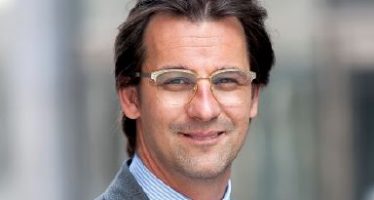Lord Waverley on Development Banks – By Name and By Nature: A Boon in Troubled Times
 Development Finance Institutions (DFI), Development Finance Companies (DFC) or Development Banks (DB) are institutions that provide finance for development projects predominantly in weaker or developing economies.
Development Finance Institutions (DFI), Development Finance Companies (DFC) or Development Banks (DB) are institutions that provide finance for development projects predominantly in weaker or developing economies.
Development banks provide medium- to long-term risk capital and technical assistance to developing economies where it cannot be found from the private sector. They are usually owned by several shareholders, often countries or governments.
The two main types of development bank are Multilateral Development Banks (MDB) and National Development Banks (NDB). MDBs have shareholders from several countries and finance development projects in several countries and regions, such as the Asian Infrastructure Investment Bank (AIIB) or the World Bank. NDBs such as the Agricultural Development Bank of China or the Development Bank of Kenya are set up by governments to finance and support domestic development projects. MDBs and NDBs fund private and public projects that provide and support global public goods.
Depending on their purpose and designated region, the banks have different mandates and remits. The AIIB, for example, focuses finance on Asia to create wealth and improve infrastructure connectivity. The African Development Bank (AfDB) is geared towards sustainable economic development and social progress on that continent. The Agricultural Development Bank of China focuses its attention, unsurprisngly, on agricultural development in China.
There are, however, common strains between them. What further sets development banks apart from commercial lenders is the inclusion of wider factors in their decision-making, such as climate change, sustainability, social impact, economic infrastructure and equality. With this diverse mandate, development banks are increasingly expected to provide solutions to global problems.
But where did development banks come from, and where are they going? The first came in 1944, with the establishment of the World Bank. The International Bank for Reconstruction and Development (IBRD), its lending arm, was designed to finance the reconstruction of Europe after World War II. During the late 1950s and 1960s, several multilateral development banks were established.
Throughout the ‘60s and ‘70s, sub-regional development banks were established, mostly in Latin America and Africa. There was also a rise in the number of Arab banks, reflecting the growing importance of oil-producing nations in the Middle East. The 1990s saw the collapse of the Soviet Union and subsequent introduction of the European Bank for Reconstruction and Development (EBRD). More recently, Asia has seen a resurgence of development banks, primarily in China with the AIIB and the NBD (also known as the BRICS bank).
The 2008 financial crash saw a global increase in lending from development banks as private finance fell. Total capital loaned between 2007 and 2009 increased by 36 percent, from $1.16tn to $1.58tn, with total assets of development banks in 2008 totalling $5tn. This is the core strength and purpose of development banks: alleviating the cyclical boom-and-bust nature of private finance.
Due in part to their strengths as international institutions that cover large regions and invest in diverse projects, support for development banks has grown. Their traditional mandate has expanded to address global issues. The decision-making process and subsequent implementation take into account factors such as economic and environmental sustainability, impact on gender equality and poverty.
Development banks, especially multilateral development banks, make for effective stakeholder management, where all shareholders are satisfied and the outcomes or policy-decisions are effective and positive, rather than a mismanaged amalgamation of competing and irrelevant objectives.
Due to their expansive remit, development banks fund projects ranging from renewable energy to telecommunications and transport infrastructure. They provide finance and engage with untested sectors that private lenders tend to avoid. The National Bank for Economic and Social Development (BDNES) in Brazil and the KfW in Germany fund new technology that has supported technological innovation, while the CORFO in Chile is designed to support entrepreneurship.
In 2015, the UN launched its 2030 Agenda, with 17 Sustainable Development Goals (SDGs) and 169 specific social, economic and environmental goals. MDBs in particular are crucial to supporting these goals.
While development banks have remained receptive to change and have largely risen to the challenges, they have detractors. Critics argue that they focus on simply financing projects, rather than ensuring their successful implementation. Banks, they argue, might be less opaque in their decision-making processes. That said, they predominantly follow World Bank procurement guidelines covering experience, financials and partnership content.
The Overseas Development Institute (ODI) in 2018 offered six recommendations. Chief among them was to boost the provision of global public goods through the enhancement of state and non-state incentives, and better co-ordination between multi-lateral development banks to produce more coherent and effective global policy.
Development banks have done a great deal of good. They have a unique and competitive edge, and should be encouraged to become more receptive and accept greater responsibility. Many want them to use their experience of diverse and complex projects, and their ability to facilitate multiple national interests, to develop effective responses to the world’s greatest challenges.
The question is not so much their ability or credentials, but whether they will be allowed to take on a new, larger and more complex mandate: one that supersedes national or regional borders.
About the Author
Lord (JD) Waverley
Member
House of Lords, London
Founder
SupplyFinder.com
Strategic Advisor
SmarterContracts.co.uk
You may have an interest in also reading…
CFI.co Meets the Head of Responsible Investments at Nordea Asset Management: Sasja Beslik
Sasja Beslik, head of Responsible Investments at Nordea Asset Management, spends a fair chunk of his time on the road
Lord Waverley: A New Chapter for the UK and a Meeting Place for the World
With the EU agreement now in place, the United Kingdom has the chance to develop a strategy that addresses the
IMF Mission Reports Positive Developments in Georgia
An International Monetary Fund (IMF) mission visited Tbilisi from November 27 to December 12, 2012 for discussions on the first


















































































